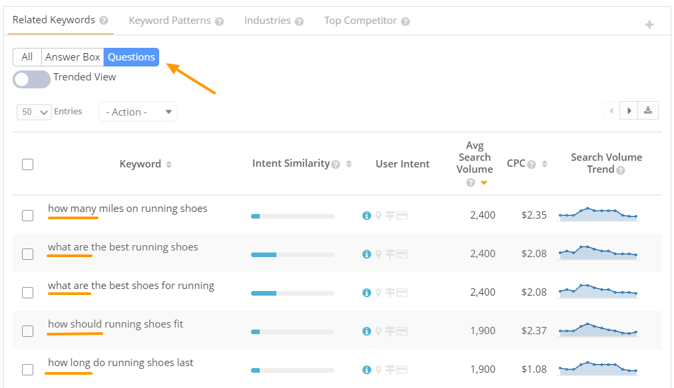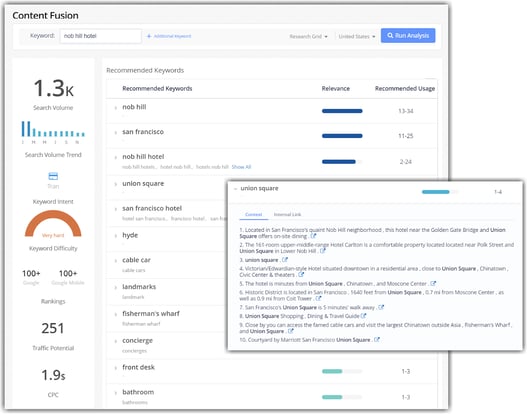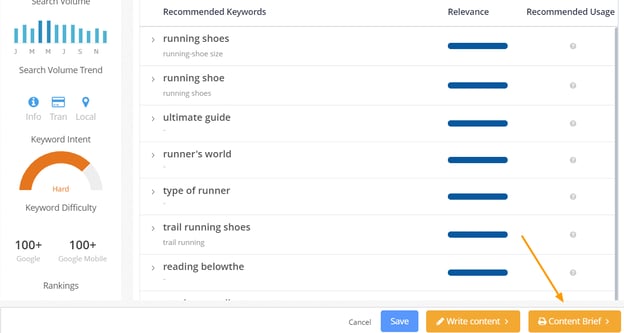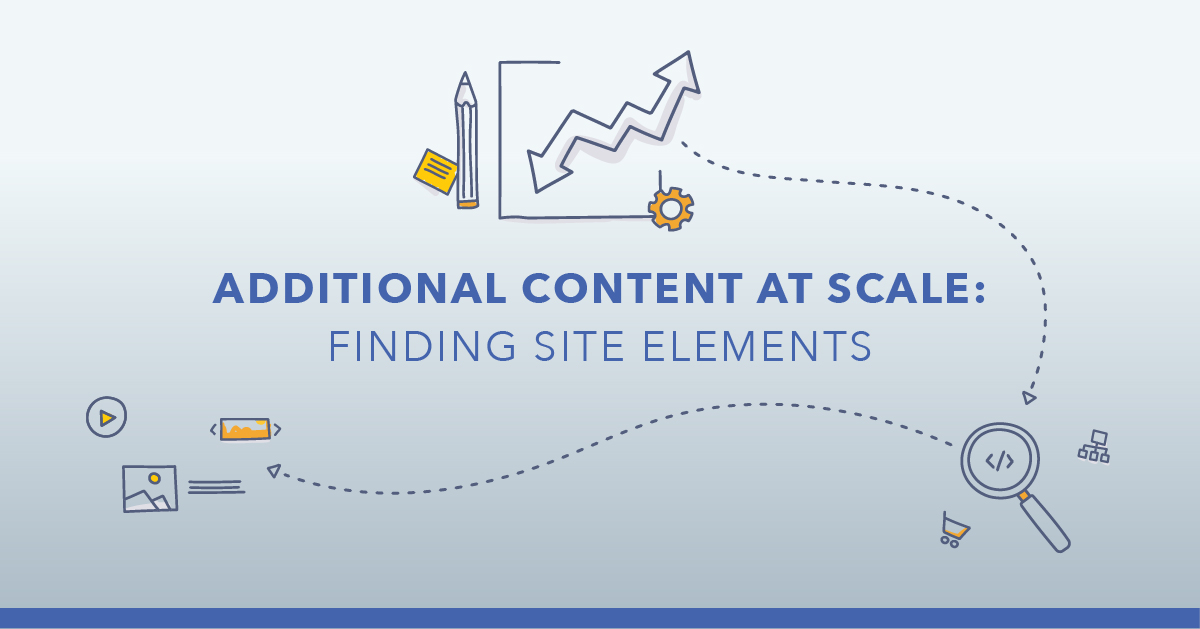Content’s importance to your marketing strategy and SEO initiatives can’t be overstated — it’s what brings organic traffic to your site, after all.
If you want to bring in that traffic, you need to do the proper planning and research. Good content takes time!
Before you begin the process of actually writing content for SEO, ask yourself:
- Do you know what topics you need to cover in the content?
- Have you identified your target audience?
- What other content should be referenced with an internal link?
It’s this type of information (and a whole lot more!) that should be included in your content brief.
Jump to the bottom of this article for a free content brief for your target keyword!
What is a Content Brief?
A content brief is a document that informs writers on the formation of a piece of content that they’ll be writing.
It’s usually created by an SEO content strategist for a content writer to ensure all necessary information is included in the copy and that the content is written in the correct tone.
We created a template for you to provide accurate guidelines to your team of content writers.
Access it below and follow along with this post to understand the importance of each area within the content brief.
Why Are Content Briefs Important?
The best way to organize your content marketing efforts is to create a brief for your writers.
Content briefs offer direction before any large time investment has been made in the content creation process.
If no details are presented in a content brief before the writing process starts, a writer may miss the mark, which will frustrate the content manager because the content doesn’t match their expectations.
Content briefs help to ensure an SEO and content writer are aligned on a project's goals and objectives from the beginning - which helps to avoid endless rewrites!
- Mary Kate Mack, Content Manager at seoClarity
From a writer’s point of view, the frustration comes when edits and rewrites are requested because not enough direction was offered in the beginning.
Essentially, content briefs ensure that your writers don't lose sight of the end goal, and you as a digital marketer or SEO don’t lose your investment by getting unpublishable content back.
They also help to ensure that all SEO elements are in place (like internal links and recommended topics to cover).
Most if not all industries are saturated with content creation, so high-quality, authoritative content is a major key to success.
Recommended Reading: Tips For SEO Content Writing
What’s Included in a Content Brief?
It’s clear that content briefs are invaluable to the content creation process, so what exactly goes into a content brief? The words in bold are elements that need to be included in your content brief so your writers are up-to-speed.
Let's get started.
The most important component of a content brief is your target keyword. This comes after you conduct your keyword research.
If you’re an seoClarity user, you can use Topic Explorer to uncover topics, keywords, user intent, and search volume to really understand your target audience.
Information like this forms the foundation of your content brief — addressing this is what makes your content SEO-friendly!
After you’ve found your target keyword, you’ll want to give your content writers some guidelines.
This includes things like:
Target Audience
Who is this content meant for? It could be those who are in the awareness stage of the buyers’ journey, or it could be meant for those in consideration, for example.
The best content is written for the correct audience. This is also where you should define the user intent: What does the searcher intend to find?
Content Length & Presentation
Depending on the target audience and the type of content you want to build, your content length is a variable that needs to be addressed.
For example, should your writer create a short-form listicle that’s aimed at securing the Answer Box, or an in-depth pillar page?
Estimated Word Count
This is where you need to call out your expectations for the specified word count — if you envision a 400-word blog post and get back a 1,000-word document, it’s clear that your writer didn’t understand the expectations of the assignment.
Deadline
We all know this! Your content strategy is doomed to fail if no timeline or deadline is set in place.
When your writers have an understanding of what the finished product should look like, they’ll have a clearer direction for their writing, and you’ll get back what you expected.
The brief doesn't stop there — you want to give your writers as much information upfront as possible to mitigate any potential misunderstandings.
To ensure that your end product is SEO-friendly, this means including suggested titles, meta descriptions, and headings.
These elements should clue your readers in on what the content covers, but they should also be optimized for SEO. This means including your target keyword in the title and meta description, and crafting H1 and H2 headings that are actual phrases users search for.
Now comes the body of the content. You should provide your writers with external resources to review so they can familiarize themselves with the query and other top-ranking content.
This is also where you need to tell your writers what semantically-related keywords to include in the copy to be seen as authoritative.
Search engines pick up on these associations and know you are covering the topic in-depth, which in turn gives the users a positive experience.
One piece of authoritative content is hardly enough for SEO, though. In order to be a true authority in your space, you need to use the topic cluster approach. This is where you cover any central topic with a variety of content assets and connect them with internal links.

This is why it’s crucial that your content brief includes internal link recommendations for the new piece of content being created. What existing content assets do you have that this piece should point to?
With Google’s update to Passages — the search engine’s ability to rank specific paragraphs instead of a page as whole — it’s important to include high-quality, relevant information throughout your content piece.
To do this, and ensure that your content meets user demand, you want to tell your writer important questions to answer in the content.
Tip: Use Topic Explorer to instantly reveal questions related to your target query.

(Use Topic Explorer to uncover questions related to your query.)
After you’ve laid out your plan to create this authoritative content piece, you need to ask yourself: What do you want your audience to do next?
This is where you can tell your writer the aim or goal of this piece of content.
You need to decide which call to action should be included in your content brief, and therefore the content itself. Depending on your audience’s stage in the buyers’ journey, this could be:
- Subscribing to a newsletter
- Requesting a demo
- Downloading a free tool
… or really anything that meets your situation that you can track.
With this information at the ready, your writers will be armed with what they need to create content tailored to your audience that follows SEO best practices.
The Challenge of Creating Content Briefs
We covered a lot of information in the section above. And that’s just what to include in the brief! Never mind actually collecting the data and putting it together.
If you’re already familiar with content briefs, then you probably know this already: They can take an incredible amount of time to create.
How long does it take you to create a brief for your writer? Our guess: A long time!
And it’s not your fault — so many things are disconnected, from your keyword research tool, to where you’ll eventually write the content (whether it be Google Docs or Microsoft Word).
Not to mention that you also have to search your existing content for relevant internal links to ensure you’re strengthening the right topic cluster.
To make the process a little easier, we’ve created a free content brief template for you to use.
It’s a place to drop in all the information you’ve gathered to ensure your writer is up-to-speed.
Then, feel free to reuse it for your future content projects! We want you to have a place to input all relevant information to make planning a little easier.
If you’re an enterprise brand, even the template won’t be enough to streamline your process: The solution to your problem lies with artificial intelligence.
Creating Content Briefs With seoClarity’s Content Fusion
Content Fusion allows for AI content optimization and scale without forgoing quality.
It runs on an NLP processing model that allows you to write authoritative content that ranks.

(Content Fusion uncovers recommended keywords and their respective context.)
The algorithm extracts key data from top-ranking content so you can have an inside look into key terms to include in your content to cover with expert know-how.
In the example above, the keyword is “nob hill hotel” — a hotel in San Francisco. We immediately see key information like:
- Search Volume
- Search Volume Trend
- Intent
- Keyword Difficulty
- Our Current Rankings
- Traffic Potential
- CPC
The real gold lies in the keyword list, which are the semantically-related keywords to include in your content to be seen as authoritative.
Content Fusion even presents you with recommended internal links if you have relevant content on your site.
Don’t just take it from us, read this case study on how a global hospitality brand created 5x content for 800 unique pages: Creating Content at Massive Scale with Unmatched Industry Insights.
All of this data is available after simply entering your target query … That’s it!
And it gets better. You can instantly turn this information into a content brief with just another click.

(Content Fusion analysis for the keyword “running shoes”.)
You have the ability to fill out a few fields to give even more context to your writers, such as:
- Length
- Word Count
- Deadline
- Target Audience
- Recommended Links (Content Fusion will highlight suggestions)
- Call to Action
Put together, the brief looks like this — which only took a few minutes (not hours) to create:

With all of this information, your writers will be able to create high-quality, relevant content that meets and exceeds what you’re looking for.
Recommended Reading: 10 Best Content Analysis Tools
Your writers can even have direct access to the platform and write their copy in the Content Fusion UI, so there’s no over abundance of tools that disconnect their work from yours.
Next Steps: Get Your Free Content Brief
It’s time to create content briefs of your own! See how Content Fusion and its easy-to-make content briefs will revolutionize the way you assign and create content.
Try it out yourself for free!








Comments
Currently, there are no comments. Be the first to post one!